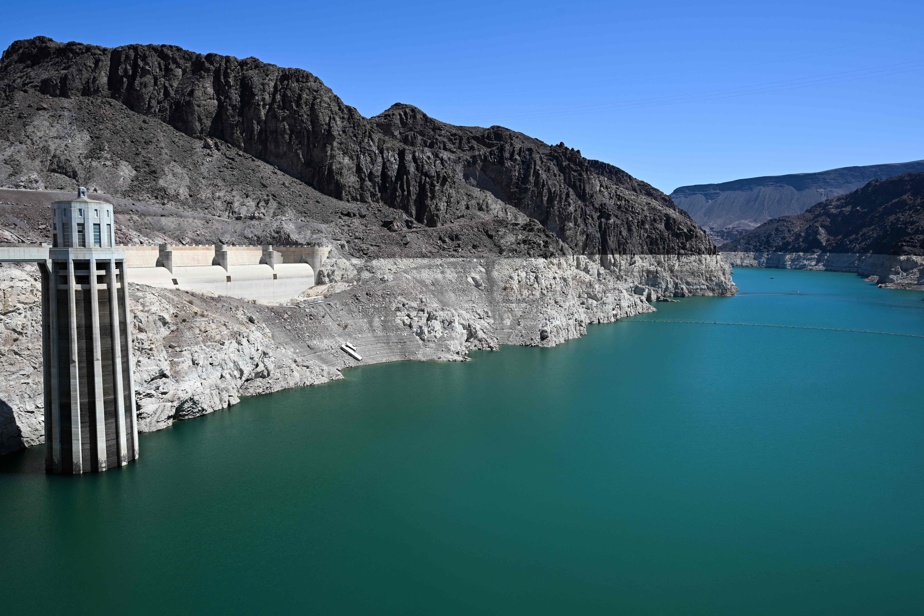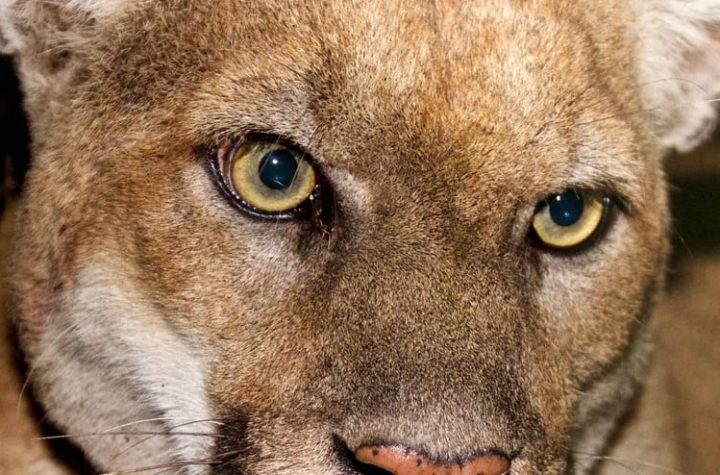
Millions of liters of water carried by the Colorado River pass through the turbines of the Hoover Dam near Las Vegas every day, generating electricity for hundreds of thousands of American homes.
Posted at 6:28 am
But the chronic drought that has affected the western United States for several years has greatly reduced the size of the reservoir, so the hydroelectric plant may soon be out of business.
“We’re at 23e “Here in the Colorado River Basin and Lake Mead it’s down to 28%,” explained Patti Aaron of the Bureau of Reclamation, the federal agency that manages the dam.
“There’s not much pressure to push the water through the turbines, so the efficiency drops and we don’t produce as much power,” she continues.
During its construction, the Hoover Dam was a symbol of American ambition and the skill of its engineers. Begun in 1931, in the midst of an economic crisis, the work mobilized thousands of workers to sweat 24 hours a day to build the world’s largest hydroelectric dam.
The work dammed the Colorado River, leading to Lake Mead, which remains the largest reservoir in the United States today.
At its highest, the lake reached 365 meters above sea level. But after more than twenty years of drought, it has now reached 320 meters, its lowest level since it was filled.
The lake is currently losing a foot every week. If it falls below 289 meters, the dam gates will sink and the turbines will stop.
“We are working very hard to make sure this doesn’t happen,” said Mr.me Aaron.
snow melt
The Colorado River originates in the Rocky Mountains and meanders for more than 2,300 km through Colorado, Utah, Arizona, Nevada, California and northern Mexico, where it empties into the ocean – more painful.
It mainly receives snow, which accumulates at high altitudes in winter, gradually melting in the warmer months.
But under the influence of climate change, precipitation is decreasing and snow is melting faster, depriving the river of some of its resources, which supplies water to tens of millions of people and many farms.
Boaters on Lake Mead, many of whom are from Las Vegas and surrounding towns, say they are doing their part to preserve the water.
They cite succulents that have replaced their lawns and great efforts in desert cities to recycle water in homes.
“But you have farmers in California growing almonds for export,” grumbles Cameron Wells, who lives in Henderson, Nevada.
In Southern California, millions of households are now forced to limit garden watering to one or two days a week.
But in the Nevada desert, huge buildings continue to be built at the gates of Las Vegas, and green golf courses emerge from the arid and dusty landscape.
“out of sight”
For Stephanie McAfee, a climate scientist at the University of Nevada, Reno, the American West has always had this unlikely side. “The average rainfall in Las Vegas is ten centimeters a year,” she told AFP.
“For big cities like Las Vegas, Phoenix or Los Angeles to exist, we use the water that falls in the form of snow in very wet and remote western regions,” adds the scientist.
According to her, the drought of the last two decades is rare on a climate scale. But “what’s happening now is that we have droughts and temperatures that are very warm, and when temperatures are high, everything dries out quickly”.
“This is a consequence of climate change fueled by greenhouse gas emissions from human activities. »
In Lake Mead, Jason Davis, a boat salesman, steers his boat in the direction of the titanic Hoover Dam, where rings of mineral deposits along its sides testify to the level the water reached years ago.
For him, work should be protected, not an electricity generator like a landscape.
“People who don’t come don’t realize. It is “out of sight, out of mind”. But we use a lot of water,” he says. “Until you see these rings, you don’t understand the problem”.








